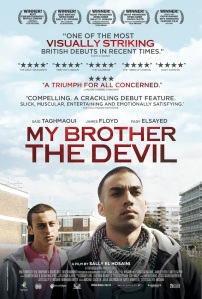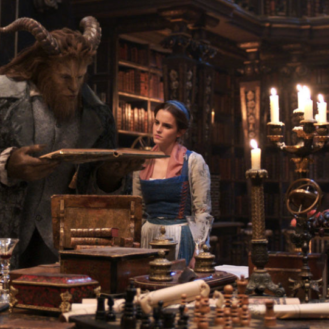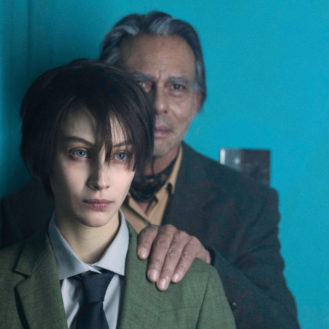A film flying in from the UK called My Brother the Devil is sure to catch North American audiences off guard. It’s a compelling piece of work and an exceptional feature film debut from writer/director Sally El Hosaini, providing plenty of challenges for her characters as well as for her audience. Movie goers will be glued to the screen as a pivotal event changes the lifestyles of those driving Hosaini’s story.
Brothers Rashid and Mo (played incredibly well by James Floyd and Fady Elsayed) may live in the same house, but they both live their lives in different ways. Rashid hangs with a tougher crowd who protects their territory from other gangs, while Mo imagines what life would be like to walk in his older brother’s shoes. Mo tries to get himself involved with the dealings Rashid dabbles in, but his older kin refuses. Rashid loves Mo too much to involve him with his social life.
When a gang member is killed, Rashid and Mo observe the situation from two different perspectives. Rashid realizes the level of frightening danger in his life while Mo feels the need to step up, assist in getting even, and fill the voids his shocked brother isn’t tending to.
The two actors take their characters down unsuspected paths, offering lots of ideas and motivations for the audience to breathe in. Mo’s progressive aggressiveness becomes alarming and scary and Rashid’s retrospective leads him to invite other unfelt emotions towards others.
I find it hard to call these surprises in the screenplay “twists” because they aren’t there to game change in a gimmicky way. Each choice feels concrete and while the results may be jarring in Rashid’s case or upsetting in Mo’s case, we believe why they would feel the need to do the things they do.
This film is very careful with how and when it uses violence and realistic bloody effects. Hosaini only utilizes these moments a few times, which adds to the discomfort when they all of a sudden take place – just as writer/director David Lynch did with obscenities coming out of antagonist Frank Booth in Blue Velvet. My Brother the Devil’s sporadic moments of provoked rage is the proper dose of reality existing behind the tough guy personas. A dose of reality that these angry adolescents forget is there.
Hosaini’s film looks at male machismo and that instinct to prove something. Given the rough nature of the subject matter, Hosaini handles her characters delicately and highlights the innocence and curiosity beneath the tough guy, go-getter attitudes. She shows that while these thugs are tough in large groups, they’re very vulnerable when left by themselves. Even Mo – who starts off very naïve and skimming on becoming a loner – has these same unguarded moments, but instead, these instances show how lost he is without his guiding brother.
The film deals with a focused, authentic brotherly relationship. However, I didn’t pull a hard hitting story of brotherhood from My Brother the Devil. I think that’s the point though, and that’s what I liked about Hosaini’s film.
The cinematic route of “brothers stick together through anything and everything” is a well known track to follow. To present a story of two comfortable people who are trying to figure out the direction of their lives while making drastic adjustments they were unprepared to make is a real gem of a story featuring lots of risks. Hosaini could’ve taken a very run-of-the-mill approach to her own material, but the allure of these two contrasting personalities in these shady settings makes My Brother the Devil stand on its own.
Sally El Hosaini and her skilled cast and crew should all be extremely proud of themselves. My Brother the Devil is absolutely gripping with every turn in this character study that’s an offspring of Stephen Chbosky’s winner The Perks of Being a Wallflower and Shane Meadows’ unruly This Is England.





Leave a comment